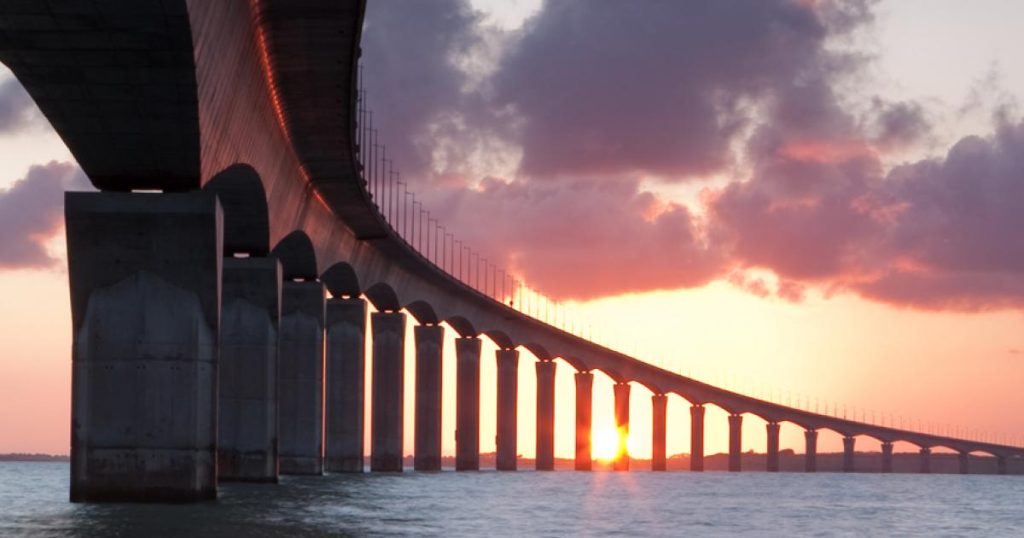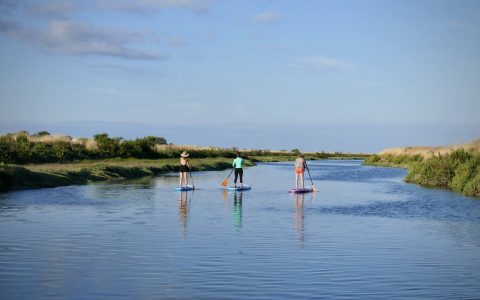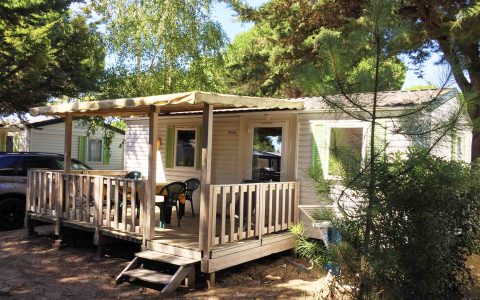The Bridge to the Île de Ré
One of the first questions that might spring to mind when you begin planning your dream seaside holiday on an island off the coast of France, is ‘how accessible is the island?’ This is particularly valid if you plan to travel to the Île de Ré with your own bikes or water sports equipment, thus taking the options of travel by boat or plane out of the equation. While we do provide an in depth article addressing the various ways to get to the Île de Ré, there is one particular piece of infrastructure that merits an article of its very own… the Île de Ré Bridge (or as it is known in French, the Pont de l’Île de Ré).

©kinugraphik
The history of the Île de Ré bridge
The Île de Ré bridge connects the Île de Ré (Rivedoux Plage) to the French mainland (La Rochelle), by way of a curved box girder bridge, which stands 42 metres above sea level at its highest point, thus allowing ships to pass underneath. This makes it the second longest bridge in France after the Saint-Nazaire bridge, which crosses the Loire.
Prior to the inauguration of the bridge on 19 May 1988 following a four-year construction period and almost 10 years of planning, the Île de Ré was previously accessible by means of a ferry, however, the island’s increasing popularity as a tourist destination led the authorities in the Department of Charente-Maritime to seek an alternative and more suitable means by which to access the island. The government funded project was taken on by the construction company Bouygues, with the estimated cost coming in at just under €60 million. Construction required the use of 46 pre-stressed concrete piers and prefabricated voussoirs.
In the high season the number of vehicles passing over the bridge on a daily basis often exceeds 30,000, with he bridge welcoming a total of more than 3 million visitors to the island each year. Consequently, significant studies had to be carried out to ensure that the structure could withstand seismic loads and temperature fluctuations and comply with all impact resistance standards.
Accessibility and toll charges
The introduction of the bridge has been truly transformative in rendering the Île de Ré accessible to visitors from throughout France and further afield. The island shares an airport with La Rochelle, meaning travellers flying from England, Portugal, Belgium, and even Morocco can purchase affordable flights and then continue their journey to the island using the dedicated electric shuttle service, or by bus, car, or bicycle.
To help offset the cost and the environmental impact of the bridge, crossing in the direction from the mainland to the island is subject to tolls, which vary depending on the time of year and the size of your vehicle. Tickets can be purchased from the ticket office at “Le Belvédère”, on the mainland, which is open from 5:30 am until 9:30 pm. As of 2012, the charge has been considered an eco-tax, with half of the revenue generated fed back into the maintenance of the bridge, and the other half allocated to the protection and management of the island’s endangered natural areas, and to the promotion of “clean” means of transport.
The table below provides an overview of the toll charges for the bridge crossing from La Rochelle to the Île de Ré.
| Vehicle class | Toll in high season (15 June to 15 September) | Toll in mid-season (2 March to 14 June)* | Toll in low season (15 November t0 1 March) |
| 1 / 2 – Cars and lightweight vehicles with the option of a trailer | €16 | €8 | €4 |
| 3 – 2-axle heavy vehicles with a max. height of 3m and a max. weight of 3.5t | €18 | €18 | €18 |
| 4 – 2-axle heavy vehicles taller than 3m or weighing more than 3.5t | €40 | €40 | €40 |
| 5 – 2-wheeled motorised vehicles with an engine size greater than 50 cc | €3 | €3 | €3 |
* High-season tolls apply on Ascension Day and on the Pentecost weekend, including the day before the actual holiday.
Reduced rates are available for travellers with an annual subscription, details of which are available via the bridge’s dedicated website. Crossings in either direction by bike or on foot are free of charge, with dedicated cycle lanes and pedestrian footpaths incorporated into the design of the bridge. Passage is also free of charge to locals maintain their primary place of residence on the island.
Ensuring a safe crossing
Given the high volume of traffic crossing this remarkable feat of engineering, a number of measures have been implemented to ensure the safety of users making the crossing:
- A 100 km/h speed limit is in force on the bridge, which must be adhered to at all times
- Drivers are prohibited from overtaking, stopping, and making U-turns on the bridge.
- Close attention must be paid to all traffic and information signs, which are subject to change – the bridge is equipped with surveillance cameras, speed sensors, variable message signs and emergency bollards.
- If possible, it is recommended that you avoid peak times, such as Saturdays in the summer, to avoid traffic jams.
If you are planning a holiday on the beautiful Île de Ré, the toll bridge connecting the island to the mainland offers a reliable, safe, and affordable way to access the island by road. And aside from marvelling at the structure’s impressive architecture, you will also get to enjoy stunning views of the ocean and the island itself as the anticipation for your dream holiday at our campsite tangibly builds with each metre of the 3 km crossing.









